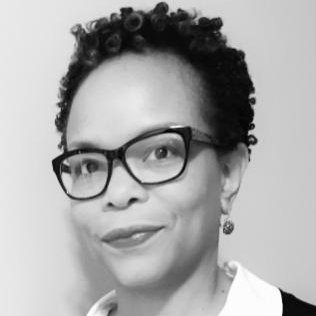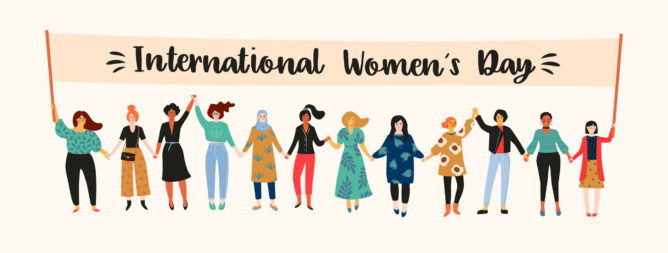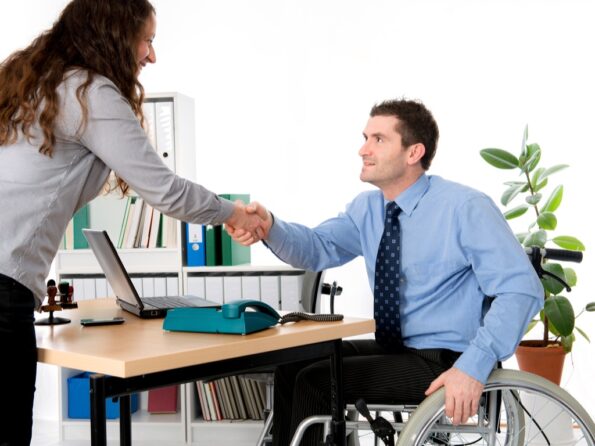Employees play a major role in the diversity and inclusivity of office environments. In effort to generate awareness within employees and encourage a positive working environment, companies are investing in Unconscious Bias training. A practice that, as Desiree Dancy said during our one-on-one conversation, “encourages participants to be introspective, to think about where bias comes from and act differently upon it.”
A recognized leader in Diversity and Inclusion initiatives, Desiree’s work has helped raise awareness and draw attention to inclusivity for companies and organizations including the New York Times Company and Goldman Sachs. She is credited with influencing and galvanizing thinking at the senior executive level to drive the integration of diversity and inclusion.
HR Acuity recently had the opportunity to discuss Unconscious Bias training methods, measures, and effects with Desiree Dancy. Her responses reflect the importance of diversity and inclusion training.
As Desiree states, “doing nothing is not a strategy.”
HR Acuity: Is Unconscious Bias training in response to a specific incident or a pre-emptive measure to protect employees and organizations?
Desiree Dancy: In general, I would say “no” but it can vary from organization to organization. There are so many companies that already have an existing diversity strategy, and Unconscious Bias training becomes part of the overall awareness or development portfolio. It’s a tool organizations can use as part of a larger strategy.
Some organizations may not have as a robust a Diversity and Inclusion strategy, in which case Unconscious Bias training is used to begin that the conversation around the importance pf diversity and inclusion in the workplace.
How do facilitators speak to such a sensitive topic while minimizing any potential apprehension?
With any diversity or awareness training, whether it’s “Understanding Diversity and Inclusion 101” or advanced behavior workshops around the topic of Unconscious Bias, it’s helpful to ensure participants understand the work we’re doing is not designed to place blame or make anyone feel guilty about their own thoughts or behaviors. It is incumbent upon facilitators to create a safe zone for participants so they can engage authentically with each other.
Are there any “best practices” facilitators use when approaching unconscious bias?
There are a variety of approaches to Unconscious Bias Training. There is definitely the need to approach the science of unconscious bias and how it manifests itself in our day-to-day lives. Facilitators can also engage in storytelling, either by telling their own stories or and/or encouraging the participants to tell their stories. It’s not calling someone out or saying “Well, here’s what you did.” It’s providing examples of what unconscious bias might look and sound like and encouraging people to reflect on their own behaviors if they find that they exhibit unconscious bias.
It’s also critically important to follow through and help employees address the question of “Now that unconscious bias is understood, employees are and I am aware of it, within themselves—how do I minimize it?
How can managers and supervisors foster an environment where employees speak more openly about their experiences with unconscious bias?
I think managers and supervisors have a responsibility to foster an inclusive environment where employees speak more openly about a variety of topics, not just unconscious bias. Leadership sets the tone for open and transparent communication by demonstrating their willingness to listen to different opinions, being open to feedback and empowering others.
How do facilitators engage multi-generational workforces?
I think the approach to take is to acknowledge that unconscious bias is not new. This notion of “fight or flight” – how we engage with others in a way that allows us to protect ourselves has been around since millennia. When we position unconscious bias that way, it’s not a new concept—we’ve just given it a new name!
Does Unconscious Bias training motivate action? Is it more aligned with raising awareness?
Unconscious Bias training is more aligned with raising awareness which should motivate action. The key takeaway is the encouragement of participants to be introspective when they find themselves in a situation where they think they may be demonstrating unconscious bias. Asking them to think about where that bias is coming from and acting differently upon it then they might have previously. Yes, you want to raise awareness, but you want to remind participants that once they are aware of their behavior, face it—and act differently.
How have the reactions been? Have the results of Unconscious Bias training been positive?
Unconscious Bias training and diversity and inclusion overall is a sensitive topic so the reactions have been mixed. There will always be people who have less than positive response to the training. It can be rooted in not understanding why the company is mandating this the training or questioning whether the training is meant to make certain people feel badly or guilty about who they are racially because of historical events that have negatively impacted certain segments of the population. In some cases, they’ve participated in similar workshops and felt the outcomes were minimal.
That said, I have conducted many Unconscious Bias discussions where participants felt positive about the insights gained and have made a commitment to being more introspective about their own biases and open minded about difference.
With unconscious bias and diversity and inclusion overall, doing nothing is not a strategy. It’s not passive—it’s very action-oriented. One of the outcomes of the Unconscious Bias training is to help employees understand their role in creating a more inclusive workplace. Each employee impacts the workplace experience and should bring a higher level of mindfulness to engaging with their colleagues.
HR Acuity would like to thank Desiree for her expertise on this topic, and her continued work to provide inclusion and diversity training to organizations.




